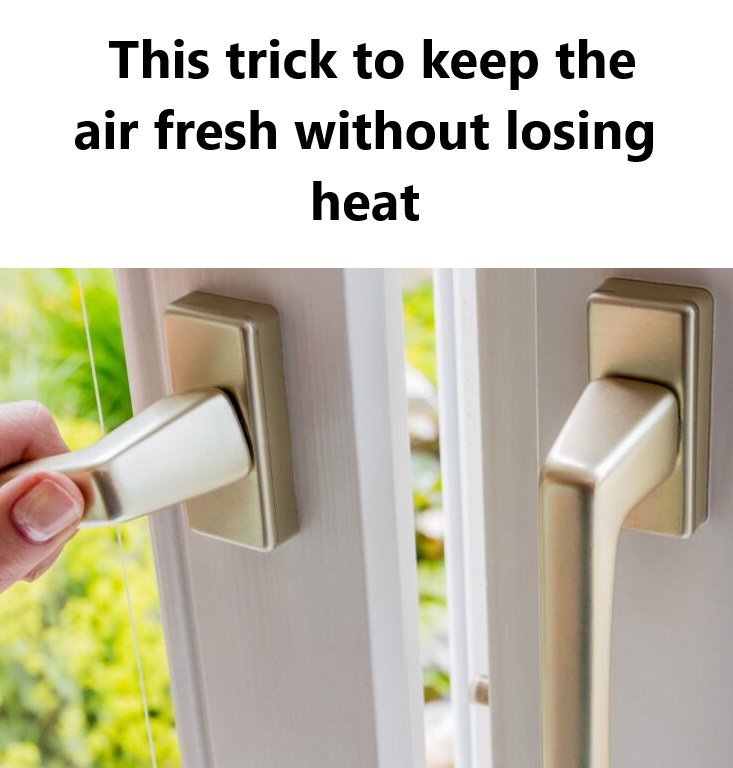ADVERTISEMENT

Ventilating in Cold Weather: Tips for Good Air Quality with Minimal Heat LossThere has been a lot of attention on ventilation in public spaces. To reduce the risk of coronavirus transmission, good ventilation is essential. In addition to viruses, poorly ventilated air can also contain pollutants, chemicals, and mold. While there is a lot of focus on public spaces, it’s also important to pay attention to indoor air quality at home. Health Complaints In poorly ventilated spaces, the air becomes increasingly contaminated with substances that can cause health problems such as headaches, respiratory issues, drowsiness, or irritated eyes. High humidity levels in the home can also lead to more dust mites and mold growth. Ventilation is essential, especially for people with dust mite allergies. Additionally, many household items release harmful substances such as formaldehyde—new furniture, flooring, and building materials. Gas from stoves, smoke from cigarettes, wood stoves, or candles also negatively affect air quality. CO2 Levels in the Home A good indicator of air quality in the home is the CO2 level. In a poorly ventilated room where people exhale CO2, the level gradually rises. A maximum of 800 ppm (parts per million) is ideal, 1,000 ppm is acceptable, and 1,200 ppm is the upper limit. For comparison, the CO2 level outside is typically under 500 ppm. From 1,400 ppm, cognitive function can be impaired, according to scientific site Scientias. If you open the windows wide to air out the home, you’ll notice that the CO2 levels drop to the lower levels found outside. However, once the windows are closed, the levels rise quickly again. Especially in the bedroom, the CO2 level can reach alarming numbers at night if windows and vents are kept closed. Read more on next page
Ventilating Against Aerosols
In small, poorly ventilated rooms, aerosols—tiny droplets with viruses—can remain in the air for longer periods, as research shows. Ventilating helps dilute the air and remove pollutants more easily, reducing the concentration of aerosols and lowering the risk of contamination.
Tips for Ventilating with Minimal Heat Loss
Even in old homes with gaps and cracks, natural ventilation isn’t always enough. In modern, well-insulated homes, ventilation is a key concern. Here are some tips for maintaining healthy air with minimal heat loss:
Keep ventilation vents open for consistent airflow.
If you have small windows (or vents), crack them open when you’re home.
Clean vents at least once a year with a brush or vacuum cleaner. Sometimes the cover can be removed and cleaned with soapy water.
Ensure air can flow through your home. Doors should have at least a 1.5 cm gap under them. If doors are too long, trim them or add vents.
Ensure extra ventilation in the kitchen and bathroom. Use the exhaust fan when cooking and an inbuilt fan in the bathroom during and after showering.
In small, poorly ventilated rooms, aerosols—tiny droplets with viruses—can remain in the air for longer periods, as research shows. Ventilating helps dilute the air and remove pollutants more easily, reducing the concentration of aerosols and lowering the risk of contamination.
Tips for Ventilating with Minimal Heat Loss
Even in old homes with gaps and cracks, natural ventilation isn’t always enough. In modern, well-insulated homes, ventilation is a key concern. Here are some tips for maintaining healthy air with minimal heat loss:
Keep ventilation vents open for consistent airflow.
If you have small windows (or vents), crack them open when you’re home.
Clean vents at least once a year with a brush or vacuum cleaner. Sometimes the cover can be removed and cleaned with soapy water.
Ensure air can flow through your home. Doors should have at least a 1.5 cm gap under them. If doors are too long, trim them or add vents.
Ensure extra ventilation in the kitchen and bathroom. Use the exhaust fan when cooking and an inbuilt fan in the bathroom during and after showering.